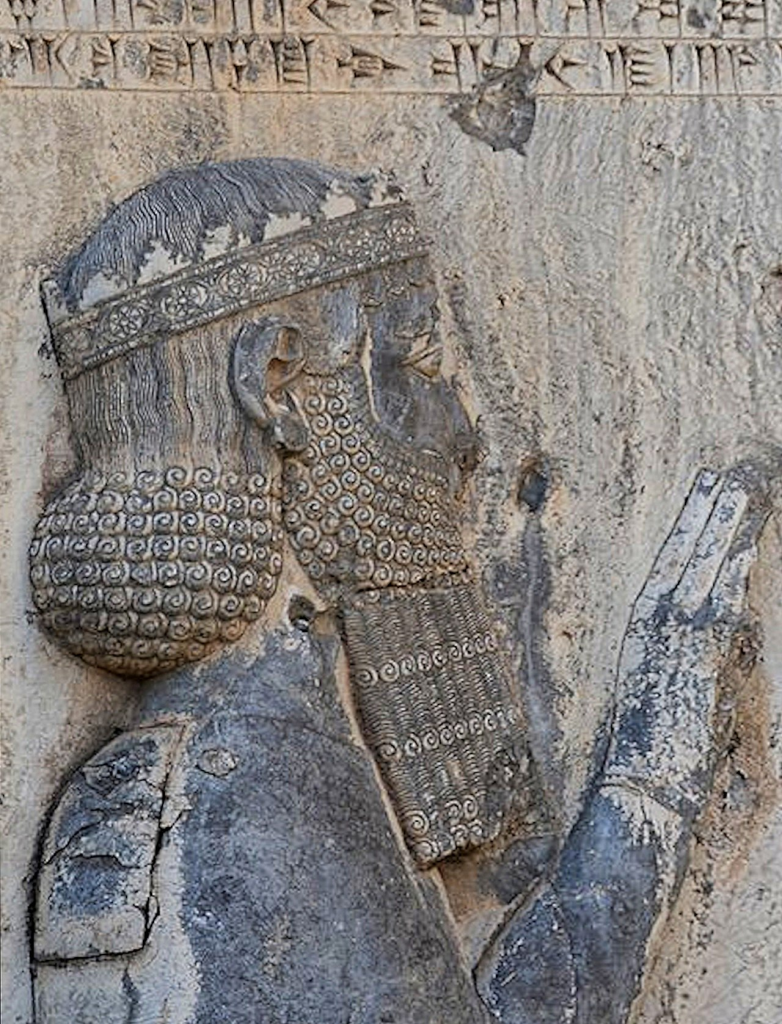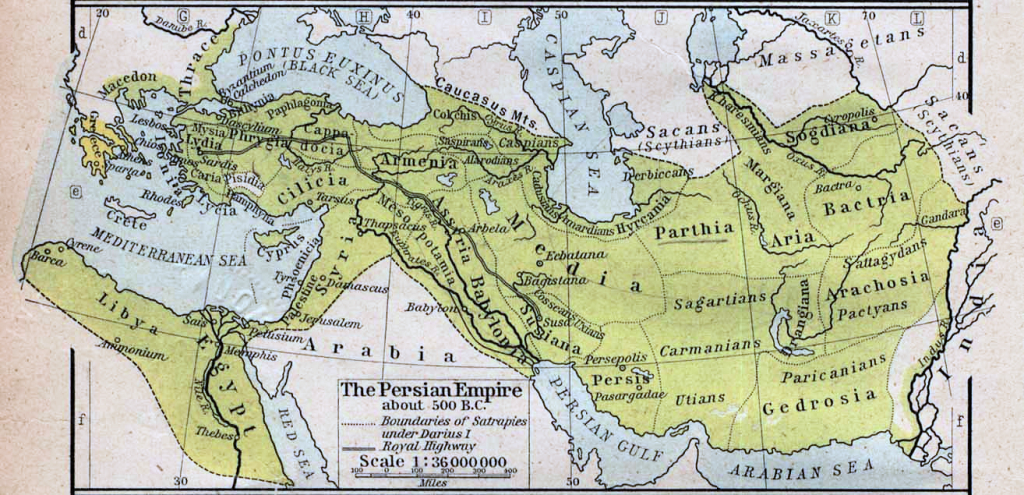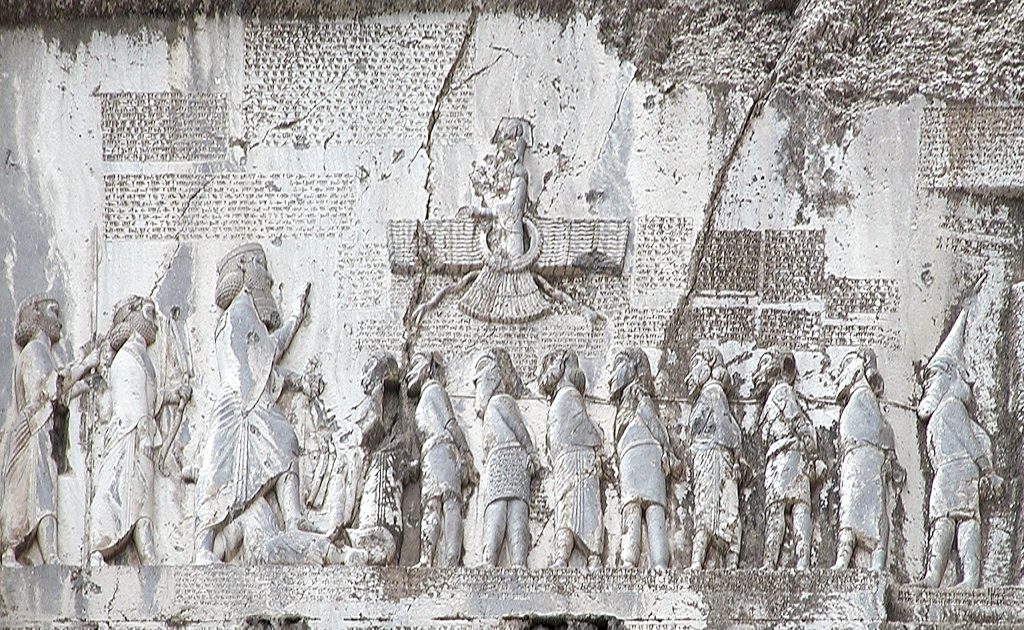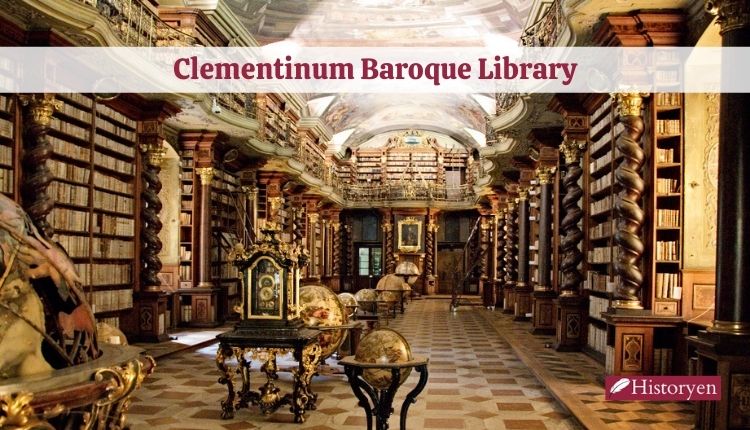In Kermanshah Province in Iran, amidst the rugged terrain, stands the monumental Behistun Inscription. Carved into the cliffs of Mount Behistun, this ancient masterpiece is a window into history, linguistics, and the triumphs of a great king. Join us on an expedition to unravel the mysteries of this multilingual Achaemenid royal inscription.
Behistun Inscription
The Place of God: The Behistun Inscription, known in Persian as “بیستون” or Old Persian “Bagastana,” literally translates to “the place of god.” This colossal rock relief was commissioned by Darius the Great, who reigned over the Persian Empire from 522 to 486 BC.
A Triumph of Multilingualism
One of the most intriguing aspects of the Behistun Inscription is its multilingual nature. It represents the longest known trilingual cuneiform inscription, scribed in Old Persian, Elamite, and Babylonian, a form of Akkadian. Darius used this triad of languages to ensure that the content was understood throughout his vast empire.
Darius’ Autobiography

The inscription begins with a brief autobiography of Darius, providing insights into his lineage and ancestry. It serves as a testament to his rightful claim to the throne and his divine mandate.
The Details of the Behistun Inscription
The heart of the inscription delves into the tumultuous period following the death of Cambyses II. Darius describes his remarkable feat of quelling nineteen rebellions in a single year, ending in December 521 BC. These uprisings, orchestrated by impostors, swept across the Persian Empire. Darius attributes his victories to the “grace of Ahura Mazda.”
Monumental Dimensions
Standing at a towering 49 feet in height and stretching 82 feet in width, this inscription commands attention. Perched 330 feet above the ground, it was strategically placed on a limestone cliff, along an ancient road linking the capitals of Babylonia and Media.
Three Languages, Three Scripts

The Behistun Inscription presents Old Persian in five columns, Elamite in eight columns, and Babylonian in 112 lines. Its significance cannot be overstated, as it played a pivotal role in the decipherment of cuneiform script, unraveling the secrets of ancient languages.
Behistun Inscription and the Darius the Great
Not only is the inscription a marvel of linguistics and history, but it is also adorned with a life-sized bas-relief of Darius the Great, symbolically holding a bow as a sign of kingship. At his feet lies a supine figure, believed to be the pretender Gaumata. To the right stand nine one-meter figures, representing conquered peoples. Above all, a Faravahar blesses the king, adding a touch of divine symbolism.
Persian Empire and Behistun Inscription
Following the fall of the Persian Empire’s Achaemenid Dynasty, the inscription’s significance waned, and fanciful explanations took hold. For centuries, it was mistakenly attributed to Khosrau II of Persia, who lived over a millennium after Darius the Great’s time.
Legends of Behistun
Mount Behistun’s legend transcends its historical importance. The Persian poet Ferdowsi recounted the tale of Farhad, a lover of King Khosrow’s wife, Shirin. Exiled and given the task of carving through the mountain to find water, Farhad’s story is one of love, tragedy, and the miraculous growth of a pomegranate tree.
Unveiling to the Western World
In 1598, Englishman Robert Sherley’s diplomatic mission to Safavid Persia brought the inscription to the attention of Western European scholars. Their interpretations, including a Christian origin and associations with Christ and his apostles, added to the mystique.
Importance of the Behistun Inscription

The Behistun Inscription, a testament to the grandeur of the Achaemenid Empire and Darius the Great, is more than an ancient artifact. It’s a key that unlocked the door to understanding the languages and history of the past. As we gaze upon its colossal letters and intricate carvings, we can’t help but marvel at the feats of those who walked before us.




each time i used to read smaller articles or reviews that as well clear their
motive, and that is also happening with this piece of writing which I am
reading at this place. spectralex.top
I’m not sure where you are getting your information, but
good topic. I needs to spend some time learning more or understanding more.
Thanks for great information I was looking for this information for my
mission. I saw similar here: sklep online and also here: Sklep online
Wow, superb blog structure! How lengthy have you
ever been running a blog for? you made blogging look easy. The full glance of your site is great, as neatly
as the content material! You can see similar: https://harmonexa.top and here https://harmonexa.top